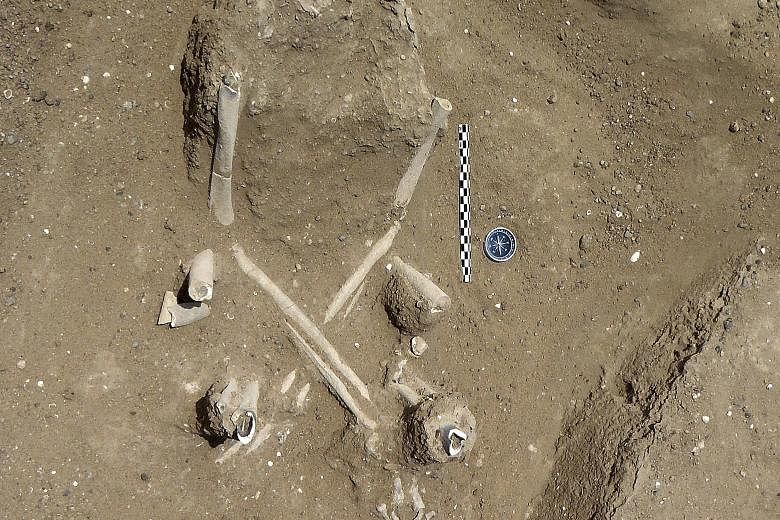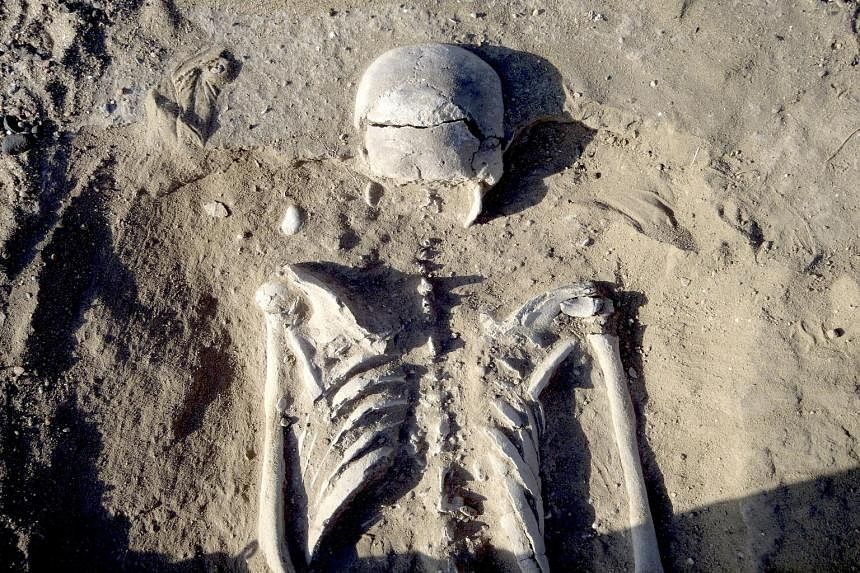NEW YORK • The scene was a lagoon on the shore of Lake Turkana in Kenya. The time: about 10,000 years ago. One group of hunter-gatherers attacked and slaughtered the other, leaving the dead with crushed skulls, embedded arrow or spear points, and other devastating wounds.
The dead, said the scientists who reported the discovery on Wednesday in the journal Nature, seem to have been scattered in no apparent order, and eventually covered and preserved by sediment from the lake.
Of 12 relatively complete skeletons, 10 showed unmistakable signs of violent death, the scientists said. Partial remains of at least 15 other people were found at the site and they are thought to have died in the same attack.
The bones at the lake in northern Kenya tell a tale of ferocity. One man was hit twice in the head by arrows or small spears and in the knee by a club.
A woman, pregnant with a six- to nine-month-old foetus, was killed by a blow to the head, the foetal skeleton preserved in her abdomen. The position of her hands and feet suggests that she may have been tied up before she was killed.
Violence has always been part of human behaviour, but the origins of war are hotly debated. Some experts see it as deeply rooted in evolution, pointing to violent confrontations among groups of chimpanzees as clues to an ancestral predilection. Others emphasise the influence of complex and hierarchical human societies, and agricultural surpluses to be raided.
No one is suggesting that one discovery, at a place called Nataruk, will settle this argument, but it may be the first instance of a massacre in a foraging society. A discovery in Sudan from an earlier date found burials of victims of inter-groupviolence, but that society may have been more settled.
Dr Marta Mirazon Lahr and Professor Robert Foley, of Cambridge University and the Turkana Basin Institute in Nairobi, Kenya, and a team of other scientists concluded in Nature that the find represented warfare among prehistoric hunter-gatherers.
Dr Douglas Fry, a professor of anthropology at the University of Alabama, who was not involved in the research, agreed that the evidence looked like a massacre of one group by the other but said that "based on skeletal evidence from one site in an area, it may be jumping the gun to call this 'war'".
Dr Fry said in an e-mail that nomadic foragers were unlikely to practise war, which tends to arise in more complex societies, and that these foragers may have already been in transition to a more settled life. He said he would like to see "fortifications, villages built in defensible locations, specialised weapons of war, artistic or symbol depictions of war", and more than one site before calling it warfare.
Dr Lahr said the population of the Lake Turkana area may have been expanding at the time, causing conflict as new bands formed and sought territory.
NEW YORK TIMES


